English
23.05.2024

TRUTH ABOUT CRIMES AGAINST SERBS WILL NOT BE SILENCED BY ANY RESOLUTION
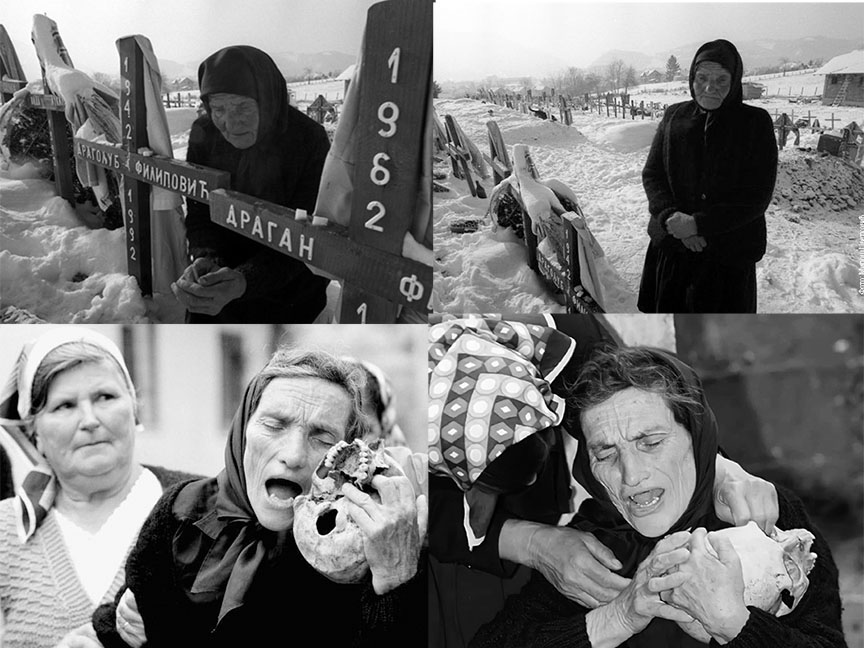
SREBRENICA, MAY 23 /SRNA/ - The Muslims of Srebrenica were declared today in the UN General Assembly as the biggest victims of the past war in Bosnia and Herzegovina, even though they committed terrible crimes against the Serb people in Middle Podrinje from 1992 to 1995, invading Serb villages and killing everyone they came across, mostly women, children, old people.
Muslim forces under the command of Naser Orić, attacking from Srebrenica, killed around 3,500 Serbs in Middle Podrinje since the spring of 1992. In the area of the municipalities of Srebrenica and Bratunac, around 2,500 men, women and children were killed on Serbian age-old hearths. The victims were killed with knives, axes, nailed to trees, slaughtered, cut off heads and other body parts, raped, the boy Slobodan Stojanović was ripped open, and no one was held accountable for these crimes, although the survivors have been demanding prosecution of the criminals since the end of the war. Those who were captured were taken to the premises of the Police Station in Srebrenica, where they were subjected to cruel torture, they beat the Serbs, pulled out their teeth, forced them to drink urine... The most notorious were in the basement of the Court, municipal and police buildings and in the "Pilićarnik " in Potočari. SERBIAN SUFFERING BEGAN ON ST. GEORGE'S DAY ON 1992 The great suffering of Serbs in this part of Podrinje began on St. George's Day, May 6, 1992, when Orić and his soldiers invaded the Serb village of Gniona in Srebrenica and the village of Blječeva in Bratunac, where five locals were killed. The fate of the inhabitants of the first villages attacked by the Muslims indicated everything that would later happen in more than 100 settlements in the Bratunac and Srebrenica municipalities, which were burned and destroyed, and many were burned alive in their homes. The Serbs moved out of Srebrenica on May 9, 1992, and the immediate reason for this was the murder of a deputy in the then Republic Assembly of BiH and judge Goran Zekić, who was killed by Srebrenica Muslims in an ambush on the driveway towards Srebrenica, the evening of May 8. The previous day, also in an ambush, in the Muslim village of Osmače, on the Srebrenica-Skelani road, seven Serbs were killed. This was followed by organized attacks on the Serb villages of Karno, Vijogor, Osredak, Čumaviće and Zalazje, where several hundred Serbs were killed by mid-July 1992. In the bloody campaigns of Naser Orić in the second half of June 1992 the Serb villages of Ratkovići and Brežani were devastated. 56 villagers were killed, and all their property was looted and destroyed. The killings and persecution of the Serbian population continued on July 5, 1992, when 14 Serbs were killed in the village of Zagoni in Bratunac, and 24 people of the Serbian nationality in the village of Krnjići in Srebrenica. The attack on Zagoni was organized again on St. Peter's Day on July 12, 1992, when 69 villagers were killed and 22 were captured in this village and the Srebrenica settlements of Sase and Zalazje, 10 of whom were found and identified 20 years later. Ethnic cleansing in the area of Bratunac municipality continued at the end of July with an attack on Magašići, where a pregnant woman and 14 other Serbs were killed. This was followed by the first organized attack on Ježeštica on August 8. On that occasion, 55 Serb houses were set on fire, and among the victims was Savka Mlađenović, who was slaughtered in her house, after her sons Dragan and Anđelko were slaughtered before her eyes, beheaded by Muslim soldiers and taken to Orić in Srebrenica. In the chronology of tragic war events and mass suffering of Serbs is September 24 in 1992, when Podravanje, the largest Serb village in Srebrenica, was completely destroyed and 35 Serbs were killed, including seven women. On that day, five civilians were taken to the Srebrenica camp. Shortly after these events, on October 5, 1992, there was an attack on the Bratunac villages of Fakovići and Boljevići, where 26 Serb civilians were killed. Bratunac and Srebrenica villages and hamlets were attacked several times during 1992. Bjelovac and Sikirić experienced the heaviest attack on December 14, 1992, when they suffered enormous human and material casualties. 68 locals, and during earlier attacks 41 locals of Serbian nationality, were killed. The attack on Kravica, the largest Serb village in central Podrinje, took place on Christmas Day 1993, when 49 residents were killed and 78 were wounded. Kravica had more than 2,300 inhabitants, 750 houses and 15 public buildings, which were completely destroyed. After the ravaging of Kravica, Orić organized an attack on the wider area of Skelani on January 16, 1993. In one day, 69 locals were killed, including two children. In the three years of war, 301 Serb civilians and soldiers were killed in the most brutal way in that area. NUMEROUS TESTIMONIES OF BESTIAL CRIMES AGAINST SERBS The greatest tragedy was experienced by fourteen-year-old Cvetko Ristić from Kušići, whose entire family was killed - father, mother, brother and sister. Muslim forces from Srebrenica looted and destroyed 5,400 Serbian homes in Podrinje, and 800 children were left without one or both parents. The tragedy of the family of Ljubomir Mlađenović from Jažestica near Bratunac after the massacre in the Second World War was repeated in 1992 when Muslim extremists killed his wife and two sons, Dragan and Anđelko, whose head they cut off and took as a "trophy" to Naser Orić. On July 12, 1992, while working in the field, Ljubomir was seriously wounded by Muslim extremists from Srebrenica, under the command of Orić. While he was undergoing treatment, on August 8, 1992, Muslims from Srebrenica invaded his village Ježestica and killed nine villagers, including his wife Savka and son Dragan. The second son Anđelko's head was cut off on the doorstep and taken to Naser Orić as a trophy to Srebrenica, where they tied it to a car and drove it through the streets, displaying it as a "Chetnik head", that is, a "war trophy". The executioner received an award from Orić, and after the bloody feast, the enraged crowd kicked Anđelko's head on the Srebrenica playground, where they celebrated the massacre of civilians with song and joy. The genocide of the Serb people in the central Podrinje in the 20th century, committed by the German forces in two world wars, the Ustashas or their "flowers" - the Muslims, is not mentioned in the resolution on Srebrenica because the Germans still mourn their ancestors who perished as occupiers of this area, the members of the families of the murdered and the surviving residents of the Srebrenica village of Podravanje believe. Drago Mitrović from the Srebrenica village of Podravanje, who survived the Ustasha slaughter in the Second World War, after which he remained mute and traumatized, was captured again in 1992 when he was slaughtered by the descendants of those whose daggers he escaped in 1941. Professor Miloš Mitrović, a native of this village, testified that on September 24, 1992, his mother Ruža, who was 65 years old, and his second uncle Mihajlo, whose body was later found without a head, were killed in Podravanje. Krstina Erić from the Bratunac hamlet of Anđići near Kravica accidentally survived the Ustasha massacre of 38 Serbs on Vidovdan in 1944 because she was not at home, but the descendants of those butchers killed her in her house on Christmas Day 1993, when 49 Serbs were killed in the Kravica area, mostly civilians. The President of the Organization of Families of Captured and Killed Soldiers and Missing Civilians from Bratunac Radojka Filipović said that on Christmas Day 1993, Serbs who survived Vidovdan 1944 and their descendants were killed in Kravica. They were killed, she says, by the same enemies, that is, the grandsons and sons of those Muslims who were not responsible for the crime committed in Anđići, as well as other crimes against Serbs in the two world wars. During the last war, more than 120 people, including children, were imprisoned in the Srebrenica camps, and more than 30 were killed. The President of the Association of Prisoners of the Birač Region Vinko Lale cited as an example the wounded nine-year-old Brano Vučetić and Mira Filipović with her seven-month-old son Nemanja and three-year-old daughter Olivera from the Bratunac village of Bjelovac, who were imprisoned and tortured by hunger in rooms where there was no heating. He reminded that the crimes committed by Muslims in Ustasha formations during the two world wars in this area remained unpunished. The search is still on for 49 Serbs who were captured and disappeared in Srebrenica during the war, and it is suspected that the remains of some of them were buried in the Memorial Center in Potočari in order to be presented as Bosniak victims from July 1995. On December 14, 1992, Muslim soldiers killed the father of Brano Vučetić from Bratunac, who was only nine years old, and his underage brother Milenko, and two other women and two children from a neighboring house were taken to the camp with him. On that tragic December day, Brano was left alone, without family and property. During the attack by Muslim forces from Srebrenica on Vučetić's village of Bjelovac, he was wounded by a bomb thrown into his house and wounded and bleeding, they caught him and chased him on foot to Poloznik, a few kilometers away, with slaps and smacks, and from there he was transported by truck to the camp in Srebrenica. When they took him away, he saw his brother Milenko leaning against the fence in the plum tree, but he did not know that he had been killed like his father Radovan. Earlier, on September 16 of that year, on the way from Bratunac to Bjelovac, his mother Radojka was killed while she was bringing food to the children. Brano survived the capture and 56 days spent in the camp in a private house in the village of Soloćuša near Srebrenica, where he and his neighbor Mira Filipović lived with her two children, seven-month-old Nemanja and three-year-old Oliver. In Bjelovac and the nearby Sikirić and Loznička Rijeka, 68 Serbs were killed that day, five of them were captured, the village was looted, then burned. Milivoje Marković, president of the City Organization of Families of Captured and Killed Soldiers and Missing Civilians, told SRNA that Muslim forces killed 578 Serb fighters in the area of the then Zvornik municipality from 1992 to 1995, while 50 of them are missing. Marković reminded of the terrible crime when Muslims from Vitinica and Kovačević invaded Kiseljak on May 26, 1992 and killed six locals on their doorstep, one of whom they set on fire in a nearby house, and to one of them cut his head off and put it in his lap. "An unprecedented crime took place on June 26, 1992, when Muslim hordes from the direction of Srebrenica invaded the Serb village of Donja Kamenica and killed a twelve-year-old boy, Slobodan Stojanović, who returned to the abandoned village to free a tied dog. His torturer was an Albanian woman, Elfeta Veseli," Marković said and pointed out that Veseli was sentenced to a minor sentence for that crime. Marković reminded that on September 1, 1992, in an attack on the Serbian village of Rastošnica, Muslims killed 20 locals, mostly civilians, six of whom are still missing. "One of the biggest Muslim crimes took place on November 6, 1992, on Glođansko Brdo, where the Srebrenica Muslims under the command of Naser Orić killed 126 members of the Army of Republika Srpska, most of whom were tortured in various ways, that is, by tying and stringing barbed wire to oak trees before they were killed," said Marković. SINCE THE WAR THE NUMBERS OF DEAD BOSNIAKS HAVE BEEN MANIPULATED The number of Bosniaks killed in and around Srebrenica is constantly being questioned, while they try to put the burden of the figure of 8,300 killed on the Serbs. However, during the court proceedings, Serbian statisticians proved to the Serbs accused in the Hague that a maximum of 3,000 Bosniaks died in Srebrenica in 1995 and that, considering the number of civilians who died, any accusation of genocide is malicious. Božo Grbić, an expert in the Serbš' defendants' defense team, stated that during the research, statisticians determined that an extremely small percentage of civilians died in Srebrenica and its surroundings, that their lists are available, but it is obvious that someone wants to manipulate that number. That the false figure of 8,372 Muslims died in the alleged genocide of July 1995 in Srebrenica is shown by the documents in the possession of SRNA, as it is enough to flip through the first issue of the wartime newspaper "Srebrenički glas" from November 1993, in which the report of the Security Service stated information about 1,552 killed Muslim fighters. "Among those 1,552, the father of Emir Suljagić was killed, who talks every day about some kind of genocide, but in fact he and those around him want to present their attackers as innocent victims," said the president of the Assembly of the Republic Organization of Families of Captured and Killed Soldiers and Missing Civilians, Branimir Kojić. Kojić told SRNA that it is known that those who perished long before 1995 were buried in the Potočari Memorial Center. According to SRNA, "Srebrenički glas" and some other documents were found in the closet of the former commander of the so-called Army of BiH in Srebrenica, Naser Orić, in his war office. The President of the Association of Families of the Missing Bratunac - Srebrenica Milka Kovačić believes that the remains of her husband Božidar, whom she has been searching for 32 years, were buried under someone else's name in the Memorial Center in Potočari. Kovačić told SRNA that in Potočari, without anyone's control, all the remains that were found in the area of Srebrenica are being buried in order to satisfy the "set" number of 8,372 Bosniak victims, as inscribed on the stone in the Memorial Center. "They dug up the entire middle Podrinje and collected all the bones they found in order to reach the set number, but whose bones are they really and from which period no one is checking," Kovačić said. Milka says that Božidar was captured by his former students on June 9, 1992 while he was on the village guard and taken to the "Pilićarnik" camp in Potočari. "My husband was last seen alive in the 'Pilićarnik' camp. Serbs from the Srebrenica village of Čumavići told me that after the exchange, and they were all imprisoned in that camp," added Kovačić. She said that one person told her that she saw that Božidar was slaughtered in front of the house of a certain Hadžović, where there was a Muslim command post in Gornji Potočari. The High Representative of the UN during the war in BiH Karlo Bozola stated in a written statement regarding the events in Srebrenica in 1995 that a large number of those buried in Potočari were brought from other towns and villages. "In Srebrenica, around 1,100 Muslim civilians died in the forests, because they were armed and responded to the attacks, but there were also those who died unarmed, about 250 more around Srebrenica in three years, and about 2,500 Muslim soldiers up to 2,800 by the end of the war. All the others buried were brought from other towns and villages," said Bozola. Bozola pointed out that he was in Srebrenica several times, and he pointed out that "many Serb civilians around Srebrenica were killed by Naser Orić in the period from 1992 to 1994, and around Srebrenica they were also killed in ambushes from private houses". The representatives of the families of captured and killed Serb soldiers and missing civilians in the past war say that they will continue to tell only the truth and that no resolutions will silence them and force them to tell lies despite all the evidence they have.
English

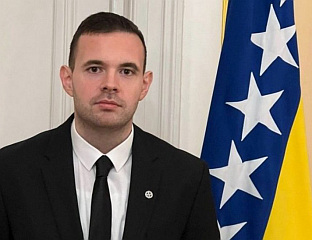
SAKIĆ: WAS KONAKOVIĆ CHOSEN BY THE BIDEN ADMINISTRATION TO DO THE DIRTY WORK?
SARAJEVO, JULY 15 /SRNA/ – Elmedin Konaković was the favorite of Joe Biden’s administration, who, as an electoral loser, was installed into power by C...

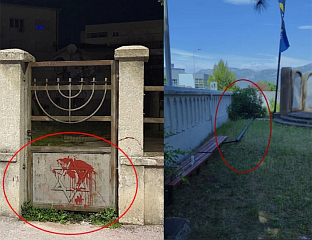
HATE-MOTIVATED ATTACKS MUST BE STOPPED
MOSTAR, JULY 15 /SRNA/ – The Jewish Community of Mostar has announced that it has undertaken a series of urgent security and organizational measures t...

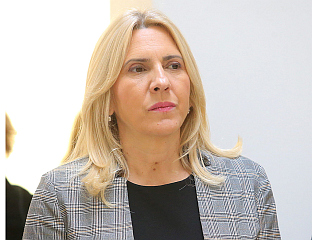
CVIJANOVIĆ: THE MORE SCHMIDT THERE IS, THE LESS BiH
EAST SARAJEVO, JULY 15 /SRNA/ – The Serb member and Chairperson of the BiH Presidency, Željka Cvijanović, has said that the more Christian Schmidt the...

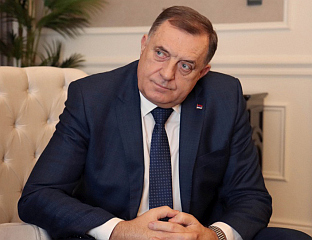
DODIK: KONAKOVIĆ ACTS LIKE A LOST MAN
BANJA LUKA, JULY 15 /SRNA/ – The President of Republika Srpska, Milorad Dodik, emphasized that the Minister of Foreign Affairs in the Council of Minis...

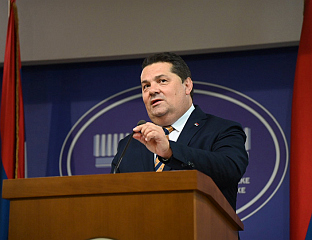
VIADUCT INVESTIGATION SHOULD TARGET THOSE TRYING TO TAKE MONEY
BANJA LUKA, JULY 15 /SRNA/ – Republika Srpska National Assembly Speaker Nenad Stevandić says the Viaduct case investigation should focus on those atte...

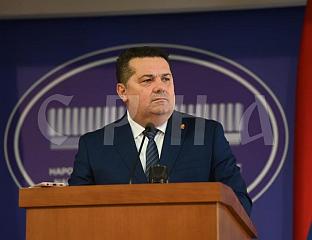
SRPSKA HAS SOVEREIGNIST GOVERNMENT THAT MAKES ITS OWN DECISIONS
BANJA LUKA, JULY 16 /SRNA/ – Republika Srpska National Assembly Speaker Nenad Stevandić said that Republika Srpska has a sovereignist government that...





 LATEST NEWS:
LATEST NEWS: